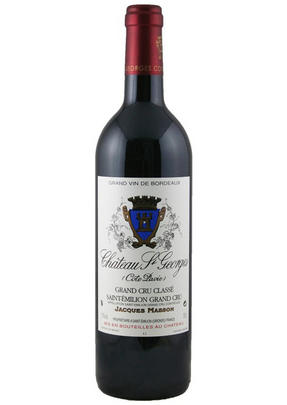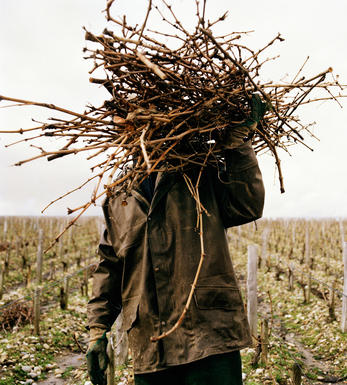
2006 Château Saint Georges, Côte Pavie, St Emilion, Bordeaux

Critics reviews
(Tim Atkin MW, Top 20 Picks from Berrys' Summer Sale, www.timatkin.com, 14 July 2011)
The Wine Gang, www.thewinegang.com, July 2011
About this WINE

Chateau St. Georges
Chateau St. Georges is a tiny 5 hectare estate superbly situated on a south-east facing chalky-clay slope between two giants of the St Emilion classification, Ch. Pavie and Ch La Gaffeleire. A very small portion of the vineyard touches on the great Ch Ausone, one of only two 1er Grands Crus Classés (A) in the appellation.
The grapes are fermented in stainless steel tanks and macerated for 3-4 weeks. Malolactic fermentation takes place in barrels, and the wines will then spend up to 20 months in barrels, 50% new, before bottling.
The barrels deemed not sufficiently good for the Grand Vin will be bottled as the second wine, Côte Madeleine. As one might expect, given its location, the chateau produces highly typical and excellent quality St Emilion, and the property may well be considered to be one of the great value sources within the appellation.

St Émilion
St Émilion is one of Bordeaux's largest producing appellations, producing more wine than Listrac, Moulis, St Estèphe, Pauillac, St Julien and Margaux put together. St Emilion has been producing wine for longer than the Médoc but its lack of accessibility to Bordeaux's port and market-restricted exports to mainland Europe meant the region initially did not enjoy the commercial success that funded the great châteaux of the Left Bank.
St Émilion itself is the prettiest of Bordeaux's wine towns, perched on top of the steep limestone slopes upon which many of the region's finest vineyards are situated. However, more than half of the appellation's vineyards lie on the plain between the town and the Dordogne River on sandy, alluvial soils with a sprinkling of gravel.
Further diversity is added by a small, complex gravel bed to the north-east of the region on the border with Pomerol. Atypically for St Émilion, this allows Cabernet Franc and, to a lesser extent, Cabernet Sauvignon to prosper and defines the personality of the great wines such as Ch. Cheval Blanc.
In the early 1990s there was an explosion of experimentation and evolution, leading to the rise of the garagistes, producers of deeply-concentrated wines made in very small quantities and offered at high prices. The appellation is also surrounded by four satellite appellations, Montagne, Lussac, Puisseguin and St. Georges, which enjoy a family similarity but not the complexity of the best wines.
St Émilion was first officially classified in 1954, and is the most meritocratic classification system in Bordeaux, as it is regularly amended. The most recent revision of the classification was in 2012

Cabernet Sauvignon Blend
Cabernet Sauvignon lends itself particularly well in blends with Merlot. This is actually the archetypal Bordeaux blend, though in different proportions in the sub-regions and sometimes topped up with Cabernet Franc, Malbec, and Petit Verdot.
In the Médoc and Graves the percentage of Cabernet Sauvignon in the blend can range from 95% (Mouton-Rothschild) to as low as 40%. It is particularly suited to the dry, warm, free- draining, gravel-rich soils and is responsible for the redolent cassis characteristics as well as the depth of colour, tannic structure and pronounced acidity of Médoc wines. However 100% Cabernet Sauvignon wines can be slightly hollow-tasting in the middle palate and Merlot with its generous, fleshy fruit flavours acts as a perfect foil by filling in this cavity.
In St-Emilion and Pomerol, the blends are Merlot dominated as Cabernet Sauvignon can struggle to ripen there - when it is included, it adds structure and body to the wine. Sassicaia is the most famous Bordeaux blend in Italy and has spawned many imitations, whereby the blend is now firmly established in the New World and particularly in California and Australia.


Buying options
Add to wishlist
Description
To our mind, Ch. St. Georges, Côte Pavie is making some of the best value wine that Bordeaux has to offer. The 2006 is approachable now, if given some air, but will be perfect in 12-18 months time. The wine has luscious dark, broody fruit that is underpinned by well integrated tannin and cigar-box spice.
wine at a glance
Delivery and quality guarantee